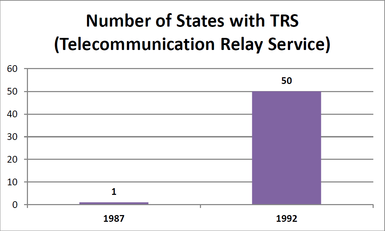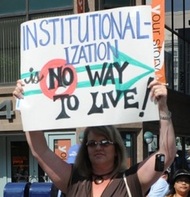"Before the ADA, people with disabilities had been excluded from the mainstream activities... a lot of attitudes have changed and a lot of perceptions about people with disabilities have been altered."
Richard Thornburgh, Personal Interview - March 22, 2013
Richard Thornburgh, Personal Interview - March 22, 2013
Social Impact
New regulations put in place by the ADA vastly improved transportation and accessibility for the disabled. Technological advances followed, allowing them to contribute meaningfully to society.
Services/Accommodations
“The improvement in this area is tremendous!! Anyone who says otherwise is not remembering how it was. Curb ramps, accessible building entrances and moving around inside, transportation, sidewalks, paths of travel, the list goes on and on and on." National Council on Disability (NCD) - July 26, 2007
|
|
"The big thing that I see is in transportation..."
Tom McCarthy, ADA National Network - July 17, 2009 |
|
|
Telecommunications
|
|
"Were it not for the Americans with Disabilities Act; her [my mother] TDD machine; MD's Relay Service and its trained operators we, her family of 6 daughters, 4 sons-in-law and 10 grandchildren would be at a loss."
Anonymous Survey Participant - May 2, 2005 |
|
|
Institutionalization
Integrated Living (Olmstead Ruling 1999)
In the Olmstead Ruling the institutionalized defendants used the ADA to gain their independence.
|
"She held up a hairbrush...'For so many years I've never had a hairbrush of my own'..."
Susan Schweik, Personal Interview - March 12, 2013 |


